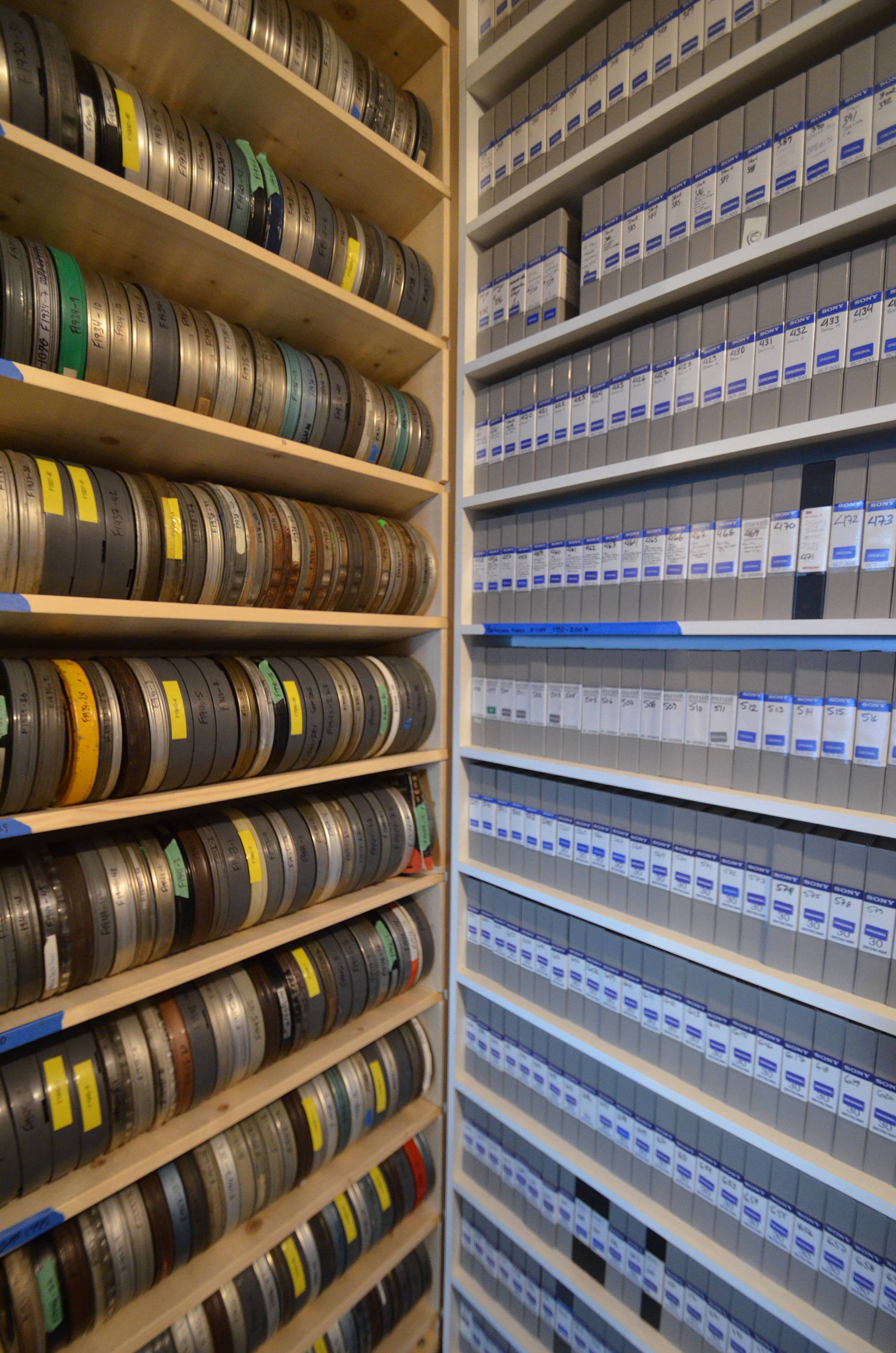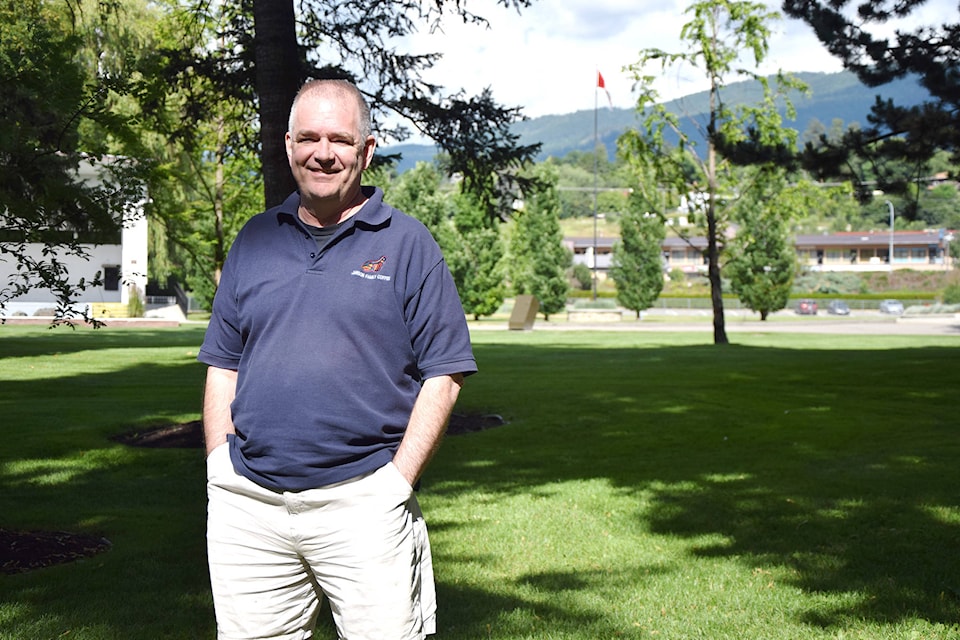YouTube is filled with videos of cats, dance routines and silly challenges, but for Francois Arseneault, it’s a time machine.
The self-identified accidental historian has collected around 2,000 reels of film from around the world and he’s spent hundreds of hours converting many into digital files, reviving the long-forgotten memories captured on the 16-millimetre film on his YouTube channel Reel Life.
With reels dating back to as early as 1923, Arseneault can give internet users a glimpse into days long gone. But with this comes great responsibility as the Vernon resident has a self-imposed duty to maintain the integrity of the original filmmaker and the nuances captured on tape.
His fascination with film and photography dates back to his time spent at the Vernon Army Cadet Camps. Arseneault first travelled to the camp from Calgary in 1978. There, he was inspired by the aerial footage captured by Doug Kermode and photos by Cam Leblond.
“Kermode was famous for taking aerials,” Arseneault said. “He had an extraordinary eye — I say eye because he had one. He lost one eye as a child so he couldn’t join the military, but he was fixated with the camp and one reason was because of the airport. He got into flying and eventually became a pilot.”
“Now imagine this one-eyed dude in a Piper Cub plane flying around and he’s got this big camera up to one eye,” Arseneault said with a laugh. “I don’t know how he got away with it.”
But the print quality of his aerials of the camp was “brilliant,” Arseneault said, noting Lablond’s shots of the entire platoon were also an inspiration for him to pick up a camera himself.
“I got my first camera the next summer,” he said.
READ MORE: Rare footage of Vernon Army Camp, 1956, uncovered
READ MORE: Vernon videographer captures thunderstorm
Film historian finds rare footage from 1926, showcasing remote Northern Vancouver Island life
That interest is now growing, especially when people with the technical skills, like Arseneault, can transfer these images into a digital format that can once again be consumed by the general public.
“I always had an eye for spotting certain imagery and saying, ‘that’s important,’” he said. “Why is it important? It’s the time period.”
“Find a single photograph around 1947,” he said. “We didn’t care, life was normal in ‘47. Between the wars, it’s a black hole in contemporary history. Only after 1950 did we start ramping up and start collecting information.”
And that information is constantly being lost due to its outdated medium as technology continues to advance.
“I’ve thought about how to best explain how I feel about it,” Arseneault said about his passion project: Reel Life. “We’ve grown up hearing stories about what life is like in the ’60s, ’70s, ’50s, ’40s from our grandparents and great grandparents. I treasure these stories, but now I get a chance to see what that was like.”
These films, whether they were gifted, donated or purchased online, Arseneault said, contain important imagery.
“Those were people, they had lives,” he said. “There is a reason he turned that camera on at that moment and captured that city, that traffic, that park. I have a responsibility to preserve this material.”
Arseneault is the first to admit he’s not an expert in all subjects caught on camera that he’s trying to decipher. That is why he leans on academics, in-person connections and online resources to conduct in-depth research, while often putting a call out to those who view his published films for more information.
He’s been publishing vignettes from 16 mm reels collected on his YouTube channel since February and he’s already up to episode 269.
Some of Arseneault’s favourite footage found features of Vernon and the Okanagan.
“I love the Vernon stuff. This is a fun little town,” said Arseneault. “The stuff I’ve been able to collect over the years from different sources has made it that much more interesting and to share that with people…”
A “drive plate” around Vernon in 1958 is one of his favourite finds, he said — which has been watched more than 14,500 times since it was published May 15, 2020.
“To see someone in 1958 hook up whatever camera he had and somehow bolt it to the dash of his ‘58 Lincoln Continental and drive on the old Highway 97 through town… I went frame-by-frame analyzing every tiny nuance and thinking, ‘this is so cool.’ And I bought that on a pure whim because the reel said ‘Canada.’”
A five-minute video — from transferring in 2K to posting online — can take Arseneault as short as two hours, but others take an incredible amount of time as he goes from frame to frame researching any piece of writing, visible licence plates, or identifiable artefact to try and gather as much data about the footage as possible.
“Sometimes, I don’t even know where I am,” he said.
Earlier this month, Arseneault uncovered rare footage of Wilkes-Barre’s 1928 Battle of Wyoming Sesquicentennial celebration, but he had no idea what he had stumbled upon until conducting a 12- to 14-hour investigation.
“I took notes of everything, added all the clues together as a Google search and came up with Wilkes-Barre,” he told the Citizen’s Voice in Pennsylvania on July 3, 2020.
Arseneault sent the completed footage to the local newspaper that called the two short films “rare” and “one of a kind.”
“It’s very humbling,” Arseneault said of the opportunity to preserve footage from the past. “The people that took these photos are long gone and if this is their one piece of legacy left behind, it’s worth preserving.”
His advice to those capturing moments on film now is simple: back it up.
“Find a way to store it,” he said of young videographers making videos for TikTok, Facebook, Instagram or for any other purpose. “Back up your material. Twice. Two separate hard drives.”
Pro tip: make notes. Include the date, names of people in the footage and other key details, Arseneault said.
“If you don’t, 30 years from now, you’ll regret it.”
READ MORE: Cleanliness kits on offer at Enderby chamber
READ MORE: Vernon Performing Arts Centre rolls forward amid COVID-19
@caitleerach
Caitlin.clow@vernonmorningstar.com
Like us on Facebook and follow us on Twitter.

